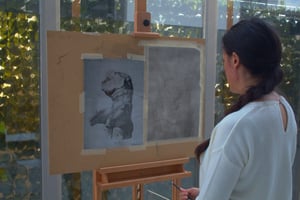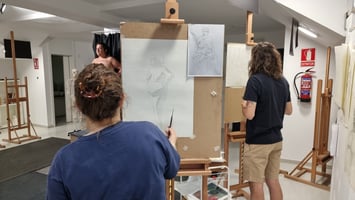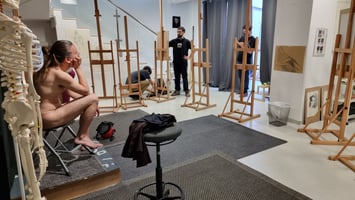Academies of art: Introduction Academies of art are educational institutions that specialize in the...
Academic Painting
Academic Painting: What is it
Academic painting is a style of painting that emerged in the 19th century and is characterized by its adherence to traditional techniques and its focus on realism. Academic painting is often associated with the French Academy of Fine Arts, which was founded in 1648 and is the oldest art school in France. The Academy was influential in the development of academic painting, which was seen as a way to promote the values of the French Academy.
Academic painting is characterized by its attention to detail and its use of traditional techniques. Academic painters often used a technique known as “grisaille”, which involves painting in shades of gray to create a three-dimensional effect. This technique was used to create a sense of depth and realism in the painting. Academic painters also used a technique known as “chiaroscuro”, which involves the use of light and dark tones to create a sense of drama and contrast.
Academic painters also focused on realism in their work. They often used photographs and other visual references to ensure that their paintings were as accurate as possible. Academic painters also used a technique known as “mise en scène”, which involves creating a scene that looks as if it could have been taken from real life. This technique was used to create a sense of realism in the painting.
Academic painting was popular in the 19th century, but it has since declined in popularity. This is due to the emergence of modern art movements such as Impressionism and Expressionism, which focused on the artist’s individual style and expression rather than on realism. Despite this, academic painting is still practiced by some artists today, and it is still seen as a valid form of art.
Academic painting is a style of painting that is characterized by its attention to detail and its use of traditional techniques. It is often associated with the French Academy of Fine Arts, and it was popular in the 19th century. Despite its decline in popularity, academic painting is still practiced by some artists today, and it is still seen as a valid form of art.
Academic painting is a type of painting that is characterized by its use of traditional techniques and subjects. It is often used in educational settings, such as in classrooms or museums. Academic painting can be used to create a variety of different effects, depending on the techniques that are used. Some common academic painting techniques include glazing, impasto, and sfumato.
When used correctly, these techniques can create a stunning and impactful painting. However, it's important to remember that each technique should be used sparingly. Overusing a technique can result in a painting that looks overdone and amateurish.
If you're new to academic painting, I recommend starting with glazing. Glazing is a technique that involves applying a thin layer of paint over a dry base layer. This technique is often used to create a luminous effect. To create a glaze, you will need to mix a small amount of paint with a medium. Once you have mixed the paint and medium together, you will need to apply it to your painting using a brush or roller.
If you're looking to add depth and dimension to your painting, impasto is a great technique to use. Impasto is a technique that involves applying thick layers of paint to the canvas. This technique can be used to create a variety of different effects, such as texture and light. When using impasto, it's important to use a heavy-duty brush or knife. Otherwise, the paint will likely come off of the brush or knife and onto your hands.
Sfumato is a technique that is often used to create a soft, hazy effect. This technique is achieved by blending two colors together. To create a sfumato effect, you will need to start by painting one color on the canvas. Once the first color has dried, you will need to paint the second color over top of it. Using a soft brush, you will then need to blend the two colors together.
These are just a few of the many academic painting techniques that you can use to create a stunning painting. If you're interested in learning more about these techniques, I recommend checking out a book or online tutorial. And, of course, practice makes perfect! So, don't be afraid to experiment with these techniques until you find the ones that work best for you.



